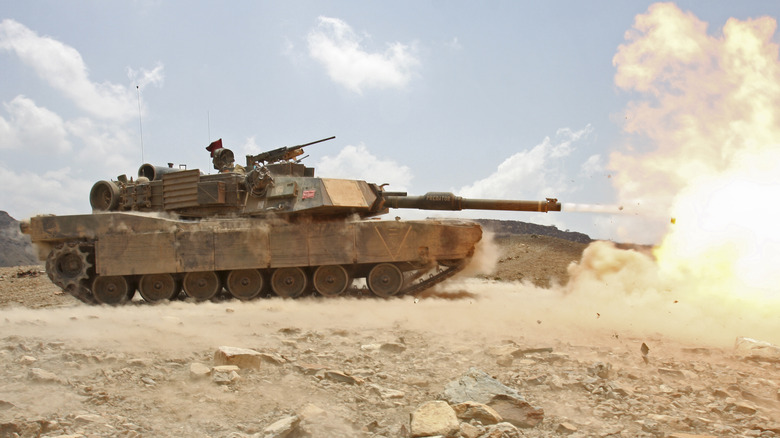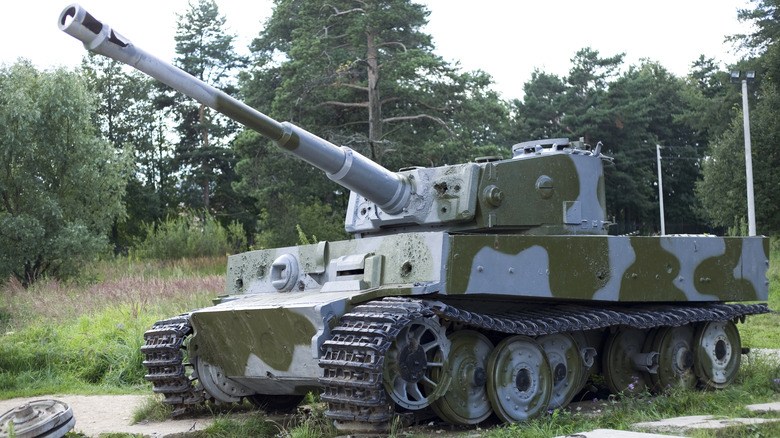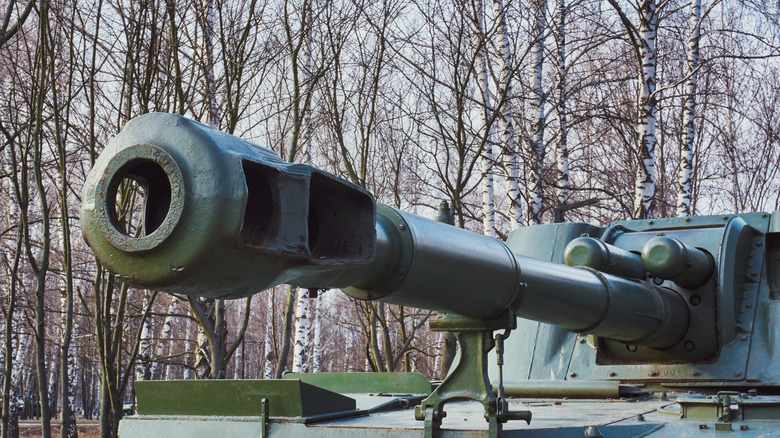When the first tanks rumbled into action on September 15, 1916, during the Battle of Flers-Courcelette, they set a template for a military vehicle that was to play a critical part in nearly every major conflict since. Nowadays, the nations with the most tanks will have fleet numbers in the thousands. However, these modern titans of warfare bear little resemblance to the primitive machines that made a promising but limited debut on the battlefields of World War I. Today, an advanced tank like the M1 Abrams — often considered one of the best tanks ever made — will cost upwards of $10 million and is an incredibly complex piece of engineering. While obvious factors like the engine, maneuverability, and armor of modern tanks are far superior, tank guns and ammunition have also massively improved. And it’s the ammunition that plays a central role in why modern tanks don’t have muzzle brakes.
Advertisement
After all, muzzle brakes can be found on any type of gun — from pistols to howitzers — and they play a crucial role in minimizing the weapon’s recoil. You’d imagine that this would be a useful mechanism for a tank. But, as it turns out, there are good reasons why muzzle brakes don’t feature on modern tanks.
What do muzzle brakes do?
Anyone who’s ever fired a rifle will be able to tell you all about how painful a recoil “shoulder thump” is. Scale this effect up to a tank gun, and it’s easy to realize why minimizing recoil is beneficial. This is what muzzle brakes do. To understand how they do this, we need to take a brief look at how guns work. A gun uses expanding gases to push a projectile along a barrel. However, Newton’s third law of motion declares that for every action there’s an equal and opposite reaction. This is the recoil.
Advertisement
Muzzle brakes control this recoil by venting out some of the gas in such a way that it pushes the gun forward and minimizes the recoil. A simple way of imagining how this works is to compare a muzzle brake with a jet engine. A muzzle brake is designed so that the vented gases push the gun forward in much the same way that a jet engine propels a plane. The result can reduce recoil by up to 50%. This isn’t the only benefit of muzzle brakes, either: They also reduce the amount of smoke produced from each shot, an important point in the heat of battle. With such advantages, it might appear strange that muzzle brakes no longer feature on modern tanks. But there is a very good reason for this.
What put the brakes on muzzle brakes?
There are several disadvantages to muzzle brakes. The cost, added weight, and extra materials required to install a brake all factor in, especially for tanks with enough internal space to absorb recoil mechanically. Brakes can also upset a gun’s balance or simply be unnecessary on low-velocity weapons.
Advertisement
But the factor that really sounded the death knell for muzzle brakes is modern ammunition. As guns and tanks evolved, so did the ammunition they fired. In particular, modern ammo types like the sabot shell and folding fin projectile played a major role in making muzzle brakes obsolete. The sabot shell allows lower-diameter shells to be fired from modern guns. These work by attaching an outer jacket to the business end of the shell, which detaches from the shell when it leaves the barrel. The lower-diameter shell offers greater armor-piercing capabilities by delivering the same force, just focused into a much smaller point. Hit a piece of wood with a hammer and you’ll leave a dent. Drive a nail into it, and you’ll punch straight through.
Advertisement
Similarly, folding fin shells like the L27A1 armor-piercing fin-stabilized discarding sabot — used by some of the most heavily armed tanks of all time — deploy their fins when fired. Both types of ammunition can be adversely affected by the presence of a muzzle brake, which can collide with the jacket or fins. In other words, they could turn a muzzle brake into a muzzle break!











